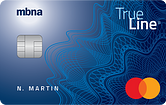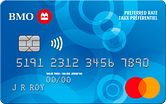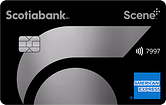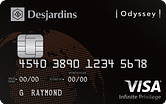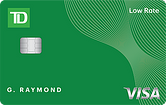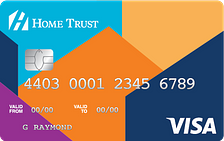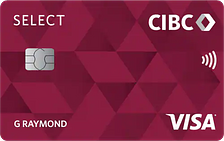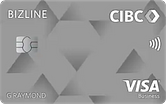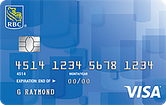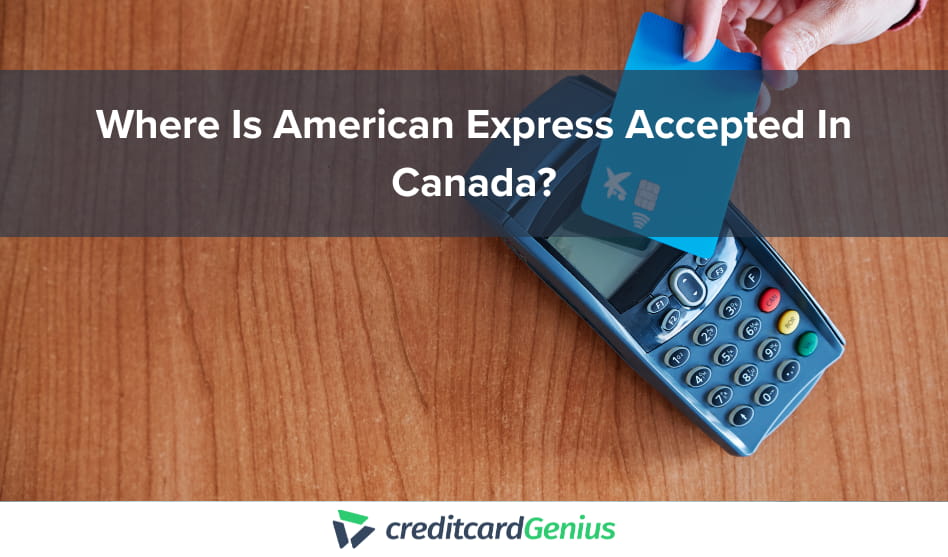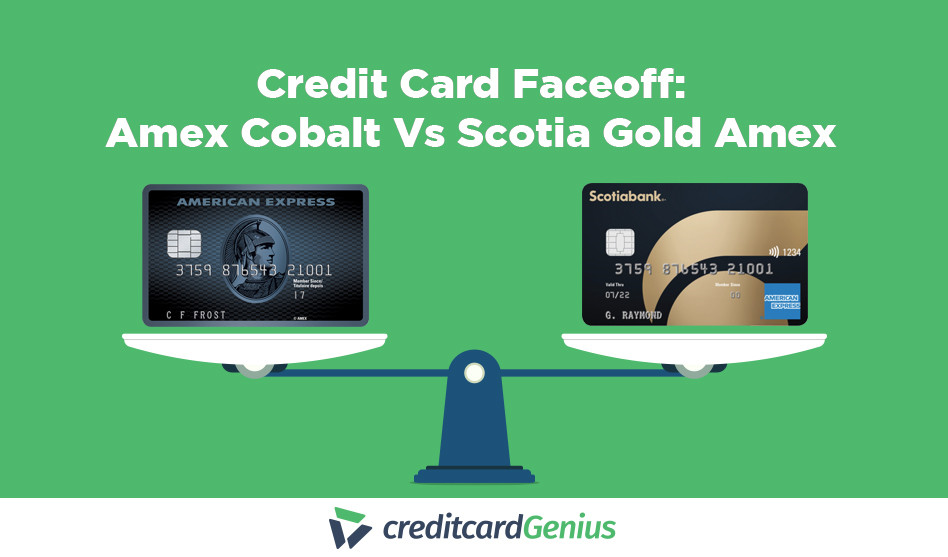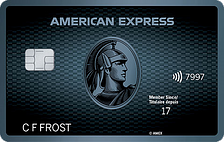Best Low Interest Credit Cards in Canada for 2025
Pay off your balance faster.

Thanks to the addition of numerous perks and benefits, the MBNA True Line Mastercard is the best low interest credit card in Canada. Still, there are plenty of other valuable options, including the Scotiabank Value Visa Card and Desjardins Flexi Visa.
If you're in the market for one, look for credit cards with low interest rates that don’t charge high annual fees in exchange for their low purchase rates.
Here, we walk you through the ins and outs of each of the top low interest options so you can choose a card that’s best for your financial situation.
Key Takeaways
- Average interest rates on normal credit cards are around 20%.
- You can save over 10% on interest by getting a low interest credit card.
- The best low interest credit card is the MBNA True Line Mastercard.
- Remember that paying off your card in full is always preferable to carrying a balance – but a low interest card can help you reduce interest charges if you need to carry a balance.
Best low interest credit cards for 2025
If you're looking for an excellent low interest credit card in Canada, this table has everything you need to know to save big money on interest.
| Category | Credit card | Interest rate | Current welcome offer |
|---|---|---|---|
| Best low interest credit card | MBNA True Line Mastercard | * 12.99% on purchases * 24.99% on cash advances * 17.99% on balance transfers |  $50 GeniusCash + 0% interest on balance transfers for 12 months (terms) $50 GeniusCash + 0% interest on balance transfers for 12 months (terms) |
| Best Visa | Scotiabank Value Visa Card | * 13.99% * 13.99% on cash advances * 13.99% on balance transfers | 0.99% interest on balance transfers for 9 months (terms) |
| Best for balance transfers | BMO Preferred Rate Mastercard | * 13.99% * 15.99% on cash advances * 15.99% on balance transfers | 0.99% interest on balance transfers for 9 months (terms) |
| Best for earning rewards | Scotiabank American Express Platinum Card | * 9.99% * 9.99% on cash advances * 9.99% on balance transfers | Up to 60,000 80,000 bonus points (terms) |
| Best for premium perks | Desjardins Odyssey Visa Infinite Privilege | * 11.9% on purchases * 12.90% on cash advances * 12.90% on balance transfers | None |
| Best low interest card for excellent credit | RBC Visa Classic Low Rate Option | * 12.99% on purchases
* 12.90% on cash advances * 12.90% on balance transfers | None |
| Best with no annual fee | Desjardins Flexi Visa | * 10.9% on purchases * 12.90% on cash advances * 12.90% on balance transfers | None |
| Best secured card | Home Trust Secured Visa (Low Rate) | * 14.9% on purchases * 19.80% on cash advances * 19.80% on balance transfers | None |
| Best for no frills | CIBC Select Visa Card | * 13.99% on purchases * 13.99% on cash advances * 13.99% on balance transfers | 0% interest on balance transfers for 10 months (terms) |
| Best for business | CIBC bizline Visa Card for Small Business | * 6.45%-17.95% on purchases * 6.45%-17.95% on cash advances * 6.45%-17.95% on balance transfers | None |
1. Best low interest credit card in Canada
Pros:
- Excellent balance transfer offer – 0% for 12 months
- Lower regular interest rates of 12.99% on purchases
- No annual fee
Cons:
- 3% transfer fee on balance transfers
- Higher rates of 17.99% on balance transfers and 24.99% cash advances
- No rewards on purchases
The MBNA True Line Mastercard is hands-down the best low-interest credit card in Canada with a low permanent interest rate of 12.99% on purchases. Plus, it has a balance transfer offer of 0% for 12 months.
To save the most on interest with this card, consider using it for balance transfers. After paying off your balance, you’ll continue to benefit from low interest rates on purchases, helping you stay on top of your monthly payments.
2. Best low interest Visa card
Pros:
- Reduced interest rate of 13.99% on purchases, cash advances, and balance transfers
- Low annual fee of $29, waived for the first year
- Worldwide acceptance as a Visa card
Cons:
- No rewards on purchases
- Limited insurance coverage included
If you’re loyal to Visa, you’ll want to check out the Scotiabank Value Visa Card. This card comes with a solid balance transfer introductory rate of 13.99% for 9 months and low permanent interest rates of 13.99%, making it a good option for paying off existing credit card debt. You can also add an additional cardholder for free.
3. Best low interest credit card with a permanent balance transfer offer
Pros:
- Low purchase interest rate of 13.99%
- Good balance transfer offer
- Low annual fee of $29 per year, waived the first year
Cons:
- Balance transfer interest rate higher than other cards
- No rewards on purchases
- Higher cash advance interest rate
The BMO Preferred Rate Mastercard will help you pay off your debt faster with a balance transfer offer of 0.99% for 9 months, plus an annual fee waiver for your first year with the card.
While previous cards on our list also had low balance transfer offers, they were limited offers. This card, however, comes with a low permanent rate, which gives you peace of mind if you think you’ll want to transfer other credit card balances at any point in the future.
4. Best low interest card to earn rewards
Pros:
- Low purchase interest rate of 9.99%
- 12 types of travel insurance
- 10 free lounge passes
- No foreign exchange fees
Cons:
- Annual fee of $399
- Lower acceptance as American Express
The Scotiabank American Express Platinum Card is the most well-rounded card of this group. In addition to low purchase interest rates, it earns rewards, offers amazing perks like insurance and lounge passes (ten of them!), and charges no foreign exchange fees.
It also has something else that isn’t common among low interest cards: rewards. You’ll earn Scene+ points at a rate of 2 points per $1 spent on all purchases, which you can redeem for movie tickets, travel, groceries, restaurants, and more.
5. Best low interest card for premium perks
Pros:
- Low permanent interest rate of 11.9%
- 9 types of insurance
- 12 yearly passes to the Desjardins Odyssey Lounge
- Discounts at select airports and ski resorts
- Visa Infinite Privilege benefits
Cons:
- High annual fee of $395
- High income requirements of $150,000 personal or $200,000 household
- No welcome bonus
While the Desjardins Odyssey Visa Infinite Privilege has a high annual fee, it also comes with some of the most luxurious rewards on our list. You’ll get a fantastic earn rate of up to 4% back on every purchase, plus enjoy permanently low rates and rewards that make up for the annual fee.
You’ll also receive Visa Infinite Privilege benefits, including 24/7 Visa Infinite Concierge Service, and Visa hotel, dining, and entertainment benefits.
6. Best low interest card for excellent credit
Pros:
- Low interest rates of 12.9% across the board
Cons:
- No rewards on purchases
- Limited insurance included
- Annual fee of $25
The TD Low Rate Visa Card offers a permanently low rate of 12.9% – but for a limited time, you’ll get an even lower rate of 8.99% for the first 6 months (terms and conditions apply). The downsides include a small annual fee, no rewards, and limited insurance. You’ll also need a high credit score to be approved for this card.
7. Best no fee low interest card
Pros:
- Low purchase interest rate of 10.9%
- 12.9% interest on balance transfers and cash advances
- No annual fee
Cons:
- No rewards on purchases
- No promos or welcome bonuses
- Physical branches limited to Ontario and Quebec
With the Desjardins Flexi Visa, you'll get a basic card with an excellent interest rate of 10.9% on purchases. It also includes mobile device insurance up to $1,000 for any device you purchase using the card.
While it’s a pretty bare-bones card beyond this, the low interest rates and no annual fee make it a solid contender for a spot in your wallet.
8. Best low interest secured card
Pros:
- Lower purchase interest rate of 14.9%
- Near-guaranteed approval
- Credit limit equivalent to your security deposit
- Helps you build credit and improve your score
Cons:
- $59 annual fee
- No rewards on purchases
- $500 minimum security deposit
As a secured credit card, this is a great option for those who have been turned away from other banks. The Home Trust Secured Visa (Low Rate) offers nearly guaranteed approval with one of the lowest interest rates for secured credit cards.
Sure, there are no rewards and you’ll pay a small annual fee – but you’ll also be able to improve your credit score to eventually qualify for a better card. In the meantime, enjoy the low interest rates.
9. Best no frills low interest card
Pros:
- 0% on balance transfers for 10 months
- 13.99% regular interest rate
- Save up to 10 cents per litre at Journie gas stations
Cons:
- No rewards
- Limited insurance included
- Annual fee of $29
When we say no frills, we mean it: the CIBC Select Visa Card is as stripped down as you can get. While you won’t get any rewards or even a lot of insurance coverage, you will get a fantastic 0% balance transfer offer and a low regular interest rate of just 13.99%.
The card does have a modest annual fee of $29 but it’s currently rebated for your first two years with the card.
10. Best low interest business card
Pros:
- Variable interest rate of prime + 1.5% – currently 6.2%
- Up to nine additional cardholders
- No annual fee
Cons:
- No rewards on purchases
- Minimal insurance (only basic travel coverage)
- Car rental discounts
The CIBC bizline Visa Card for Small Business offers businesses the best purchase interest rate (just 6.2%) and the ability to add up to 9 additional cardholders. Plus, you can use CIBC’s CreditSmart budgeting tool to manage your business expenses.
You also have the option to register your card with Visa SavingsEdge, which unlocks automatic savings when you purchase electronics, business expenses, or travel.
Compare all low interest credit cards
Awards are given out once a year but rating and rankings can shift throughout the year. The #1 card for 2025 is pinned to the top.
How we get our rankings
We take into account over 126 features of each card, broken down into seven main categories. But here, we're looking to save you the most money on credit card interest so our Genius Ratings are solely based on interest rates and fees – nothing more.
Learn more about our Genius Rating methodology
What is a low interest credit card?
Any kind of credit card can be considered a low interest credit card if its purchase rate is below the national average, which is currently around 20%.
Some of the lowest interest rates we found hovered around 10% to 14%, which saves you between 6% and 10% on your interest charges if you carry a credit card balance. This might not seem like a lot, but it can add up to thousands of dollars in savings depending on the balance on your card.
Keep in mind that it’s possible to find cards with even lower promotional rates; some might even offer 0% interest. Read the terms of these cards carefully since the interest rates often jump once the promotional period is over.
How much can you save with a low interest credit card?
The amount you could save depends on your current interest rate and credit card balance.
For example, if you had a balance of $9,000, you could see savings of up to $990 over the course of a year by switching to a credit card with lower interest – and even more if you take advantage of a balance transfer offer. With this (and some thoughtful spending habit changes), you could see your balance paid off significantly faster.
Use our credit card interest calculator to see how much you’re paying in interest – and how much you could save with a low interest credit card.
Credit Card Interest Calculator
How credit card interest works
If you spend on credit and don’t pay it off at the end of the billing cycle, the lender (that is, your credit card issuer) charges credit card interest – it’s the cost of borrowing money.
To determine how much to charge you, lenders calculate interest daily based on the balance you owe. Most lenders give you a grace period of around 21 days after a purchase before interest starts accruing. If you don’t pay the balance in full, interest is calculated from the date of the purchase.
What is a credit card interest rate?
The exact amount of interest you’re charged depends on the type of transaction. Read your card’s terms and conditions to see the percentage of interest charged on each type.
| Types of interest rate | What it is | Rates | Interest-free grace period |
|---|---|---|---|
| Purchase rate | The interest charged for the balance of purchases you’ve made | 6.95% – 30.99% | 21 to 55 days |
| Cash advance rate | The interest charged on money you withdraw from an ATM that’s taken from your card’s credit limit | 22.99% – 27.99% | None |
| Balance transfer rate | The interest charged on the existing balance that you move to a new credit card | 0% – 17.99% | None |
Remember: Interest can add up quickly and if you only make minimum credit card payments, your debt can snowball. To avoid paying interest, try to pay your credit card balance in full every month.
Fixed rate vs. variable rate interest
When you sign up for a credit card, the terms and conditions will tell you whether it’s a fixed-rate or variable-rate card:
- Fixed-rate credit cards have interest rates that don't change. The rate is determined when you're issued the card and it will stay the same unless the issuer decides to change the rates of the credit card as a whole.
- Variable rate credit cards have interest rates that change over time. An example of this is the National Bank Syncro Mastercard. It's tied to the current prime rate and will go up and down as the prime rate fluctuates.
How to reduce credit card interest
Although you don’t have much of a say in setting your card’s interest rate, you can take steps to avoid paying more in interest. Implement a few or all of these strategies to keep more money in your pocket:
- Pay off your credit card in full: Most credit cards issue a billing statement every month with a minimum payment listed. Instead of just making the minimum payment (which will leave you paying interest), pay off the entire balance. If you can’t pay it in full, make as large of a payment as you can afford.
- Be mindful when using your credit card: Some people find that only using a credit card for specific purchases, like big-ticket items or categories that earn them rewards, makes it easier to stay on top of their balance.
- Set up automatic payments: If you tend to forget when payment is due, sign up for automatic payments – just ensure there’s enough in your chequing account to cover the bill.
- Negotiate interest rates with your lender: If you’re unhappy with your card’s high interest rate, contact your bank’s customer service. You might explain that you’ve been a loyal customer for so many years, or that you’re trying to pay down debt and want to know what interest offers are available. Most banks are keen to work with their customers on balance repayment.
Combatting the rise of credit card debt
It’s no secret that credit card debt is on the rise—average debt amounts are going up every year and experts agree that there’s no easy end in sight. As Ted Michalos, Licensed Insolvency Trustee, notes, "These numbers signal a deterioration in household finances across income levels."
Fellow insolvency trustee Doug Hoyes attributes this rise to higher interest rates and unsustainable levels of inflation, which are forcing more people to use their credit cards for everyday expenses. This, in turn, increases balances and interest payments, pushing them further into the cycle of debt.
Low interest credit cards can help alleviate this cycle. Since your balance will accrue less interest, more of your monthly payments will go towards paying down the principal debt, rather than merely treading water in a sea of interest.
When does a low interest credit card make sense?
You’ve probably heard it a million times: you should pay off your credit card in full every month. However, we know even the best intentions don’t always work out. That’s why a low interest credit card doesn’t make sense for everyone.
Who should get a low interest credit card?
A low-interest card can also make sense if you’re consolidating or paying down existing debt. For instance, if you have three credit cards with 24.99% interest rates, you might transfer their balances to a low interest card so you’re only making one payment (and paying a lot less in interest).
We should point out that since these cards have low interest rates, they don’t tend to offer great rewards. That said, if you want to have a stable interest rate that won’t jump up after a promo period ends, a low interest credit card might be right for you.
How to apply for a low interest credit card?
Applying for a low interest credit card follows the same process as applying for a standard credit card from a bank, fintech, or credit union. It does help to know your credit score before you begin, so you can see which cards you’re eligible for.
Once you’ve picked a card you want (and meet the qualifications for), gather the required documents and information. This includes details on your annual income, current employment, other credit products, etc.
Find the application online, fill it out, and submit (either online or with a printed copy). All that's left is to await the issuer’s decision.
FAQ
What is the best credit card with low interest?
The MBNA True Line Mastercard is the best credit card with low interest, charging just 12.99% on all purchases and 17.99% on balance transfers. It’s a no annual fee credit card, which makes it even more appealing.
Which bank credit card is best and has the lowest interest rate?
The Scotiabank American Express Platinum Card is the best card issued by a bank with the lowest interest rate. You’ll only be charged 9.99% interest for purchases, balance transfers, and cash advances – along with other valuable perks.
What is a good interest rate for a credit card?
Most credit cards charge between 19.99% and 22.99% for purchases, so rates below that are considered good. For example, low-interest rate cards often have interest rates ranging from 8.99% to 15.99%.
Which credit card has the longest 0% interest rate?
Only one card on our list of low interest rate cards has a promotional 0% interest rate: the MBNA True Line Mastercard comes with zero interest for 12 months. However, there's also a balance transfer fee to consider.
How do I lower my credit card interest rate?
If you’ve made significant improvements to your credit score, you can always try asking your credit card issuer to take a look at your account and lower your interest rate, or work with them to negotiate a payment schedule.
Do balance transfers hurt your credit?
Transferring the balance from one card to another won’t harm your credit, but your score might temporarily take a hit when you apply for a new card since credit card issuers do hard credit checks when reviewing your application.



 ×2 Award winner
×2 Award winner 